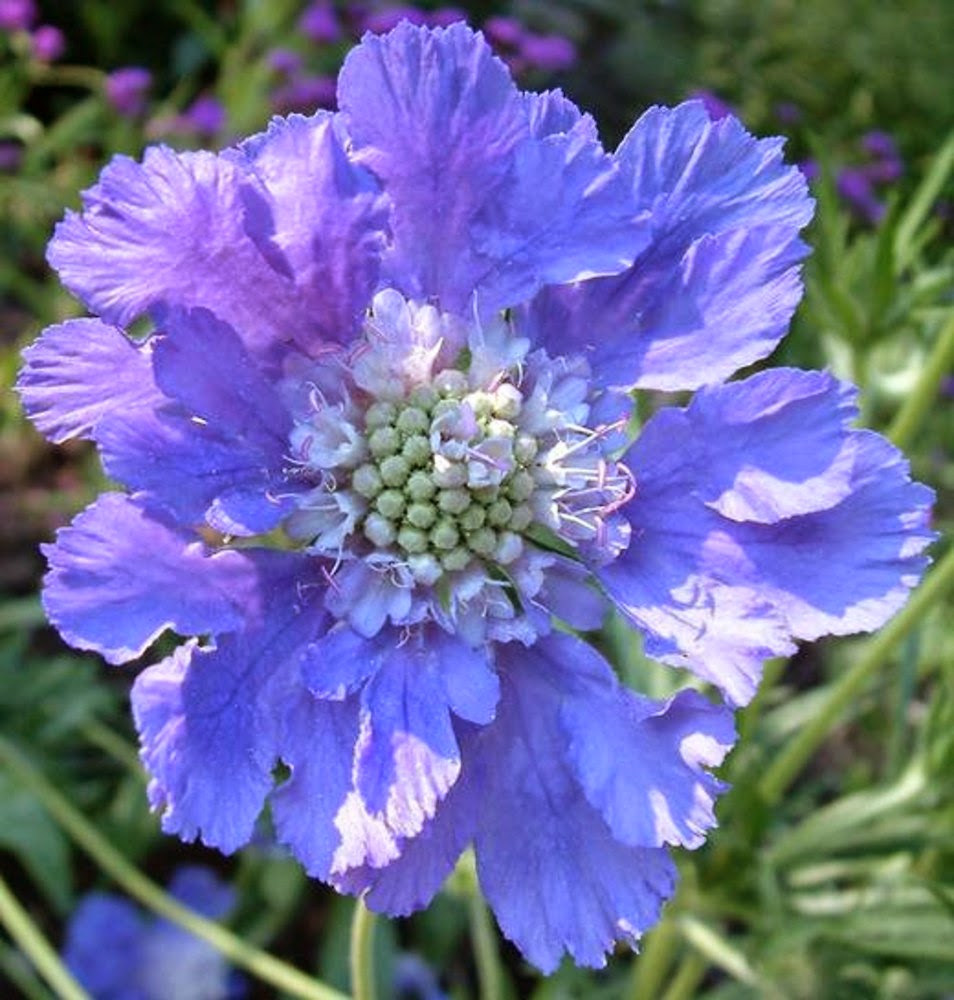Growing up to 15 feet tall, and this being a container garden, I don't know how successful such a large plant will thrive in even a largish pot. This is one milkweed that needs a bit of dedicated space to grow in. As of this writing, I have 10 healthy little seedlings, some of which I'll offer to the Parks Gardener at Alta Laguna Park in Laguna Beach, California, for the butterfly garden there; the rest I'll offer to you if you think you'd have a good place for them in your garden. Needs full sun. Think about it, and take a good look around your yard. They won't be ready to give away until spring of 2016.
 |
| © Andrew Kliss Photography |
Here are the other milkweed species currently growing in the container garden:
 |
| © Andrew Kliss Photography |
 |
| Photo by Charlotte Masarik |
 |
| Photo by Charlotte Masarik |
Karen
Schwager pointing to A. eriocarpa naturally growing out Laguna Canyon
Road inside the
Laguna Greenbelt.
At least that's what I think she's
pointing to...
Both photos above of
A. eriocarpa
were kindly submitted with permission by their author via Karen Schwager,
who subscribed way back when to the now defunct newsletter showcasing the
Alta Laguna Park Butterfly Garden and the local butterflies visiting
Laguna, when I took care of it as Parks Gardener for the city of Laguna
Beach, California.
The Container Butterfly Garden has
some
A. eriocarpa struggling to grow in pots, but from what I've read, it resents not
being in the ground. Hopefully what I do have will grow sufficiently to
the point that I'll be able to donate it to a friend of mine who owns some
acreage in the mountains above Murrieta, California, where I assume it will thrive, as there are patches of
A. eriocarpa growing within relatively close proximity to his land.
This milkweed would be an
excellent addition
to a xeric garden or a yard bordering a greenbelt area where hopefully,
if successfully grown, would produce viable seed that disperses into the greenbelt. Being a native, introducing it to a local native greenbelt area
would not be a Bozo no-no, and in fact add to the biodiversity of the
greenbelt. We like diversity. Diversity is so PC.
Other milkweed species growing in the container garden:
 |
| © Andrew Kliss Photography |
 |
| © Andrew Kliss Photography |
A. fascicularis and
A. speciosa 'Davis' are excellent candidates for today's drought conscious gardens. Both are California natives. In fact, A. fascicularis is found growing naturally in coastal/intercoastal areas of SoCal, whereas A. speciosa 'Davis' is found growing in slightly higher elevations.
Because of our dearth of available water, these two, and others, merit serious thought for possible incorporation into ones' own gardens. They need full sun; can't tolerate much shade, although I've had good luck growing A. fascicularis under the dappled shade of Coast Live Oaks in Alta Laguna Park when I was Parks Gardener there. Both are very easy to grow, and once established, one can ignore them if wished. Both species slowly form clumps that can eventually be divided and placed in other parts of the garden, or gifted to friends.
They aren't easy to find in more traditional nursery offerings, but that may change, as people's gardening habits must change in order to adapt to the very real spectre of reduced landscape irrigation. In fact, here is a timely article appearing in the San Francisco Chronicle featuring both of these milkweed species:
Milkweed an airbnb for migrating butterflies in your garden
If anyone is seriously thinking of trying out some easy to grow, drought tolerant milkweed plants for their own gardens,
please email me and I will respond with a list of links to various online mail order offerings of these plants. Please remember though, that they need full to almost full sun in order to thrive.
 |
| -Google |
A. incarnata is a lovely blooming plant, the variety 'Cinderella' producing vivid
pink flowers. Swamp Milkweed is not relegated to just swamps; it also
grows along riverbanks and in moist meadows throughout its native
habitat. Stuck in a pot or planted in the ground here in
coastal/intercoastal SoCal, average watering keeps it thriving. It will
even take a bit of drought if necessary.
 |
| © Andrew Kliss Photography |
A.incarnata 'Cinderella' in the container garden
The above photo above illustrates a holistic approach to gardening utilizing
I.P.M. (Integrated Pest Management) in action against
oleander aphids infesting my
A. incarnata milkweed plant. When I first spotted the aphis attack about a month ago, I was keeping them in check using Safer's Insecticidal Soap, making sure there were no Monarch caterpillars hosting on the plant. Last week I noticed ladybugs on its leaves whose adults and larvae prey on aphids. Also spotted was a predatory fly that also feasts on them. Hopefully, and not far behind, parasitic wasps will join in to balance the aphis imbalance.
If the plants were sprayed with chemical pesticides, I would certainly have stemmed the tide. And the ladybugs. And the predatory flies. And who knows what else. Oh yeah: the caterpillars!!! Frankly Scarlet, I don't give a damn if my plants look butt-ugly and have icky creepy crawlies living on them. I do care though that the container garden is healthy, vibrant, and a haven and home for a broad spectrum biomass.
Subscribed to Annie's Annuals & Perennials newsletter, this particular edition of Annie's should be of certain interest and concern to us here in parched and dry California. I bought several plants from her mail order business over the past two seasons, receiving healthy, vigorous plants in tiptop shape:
Garden Beautifully in Drought: A Primer




























